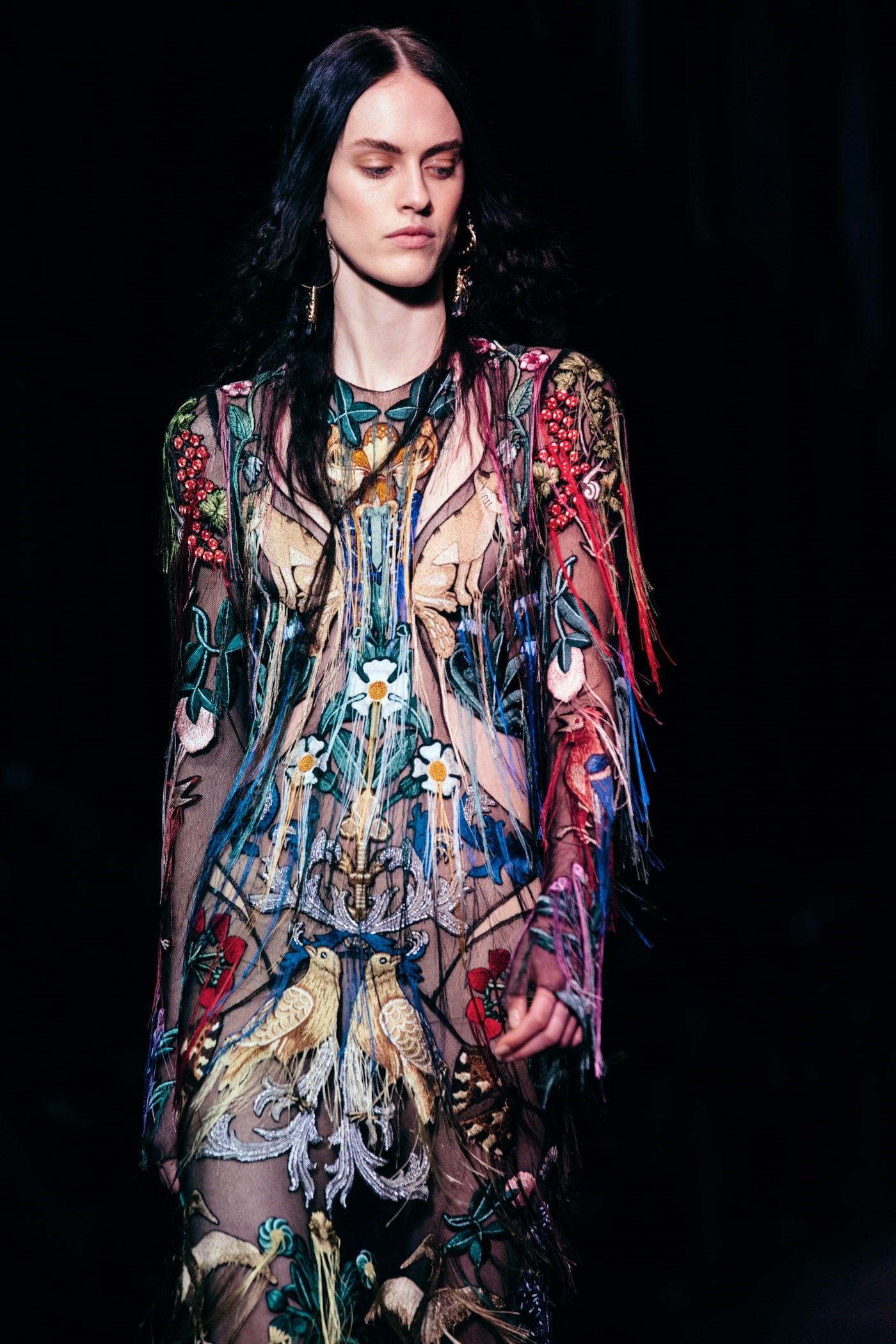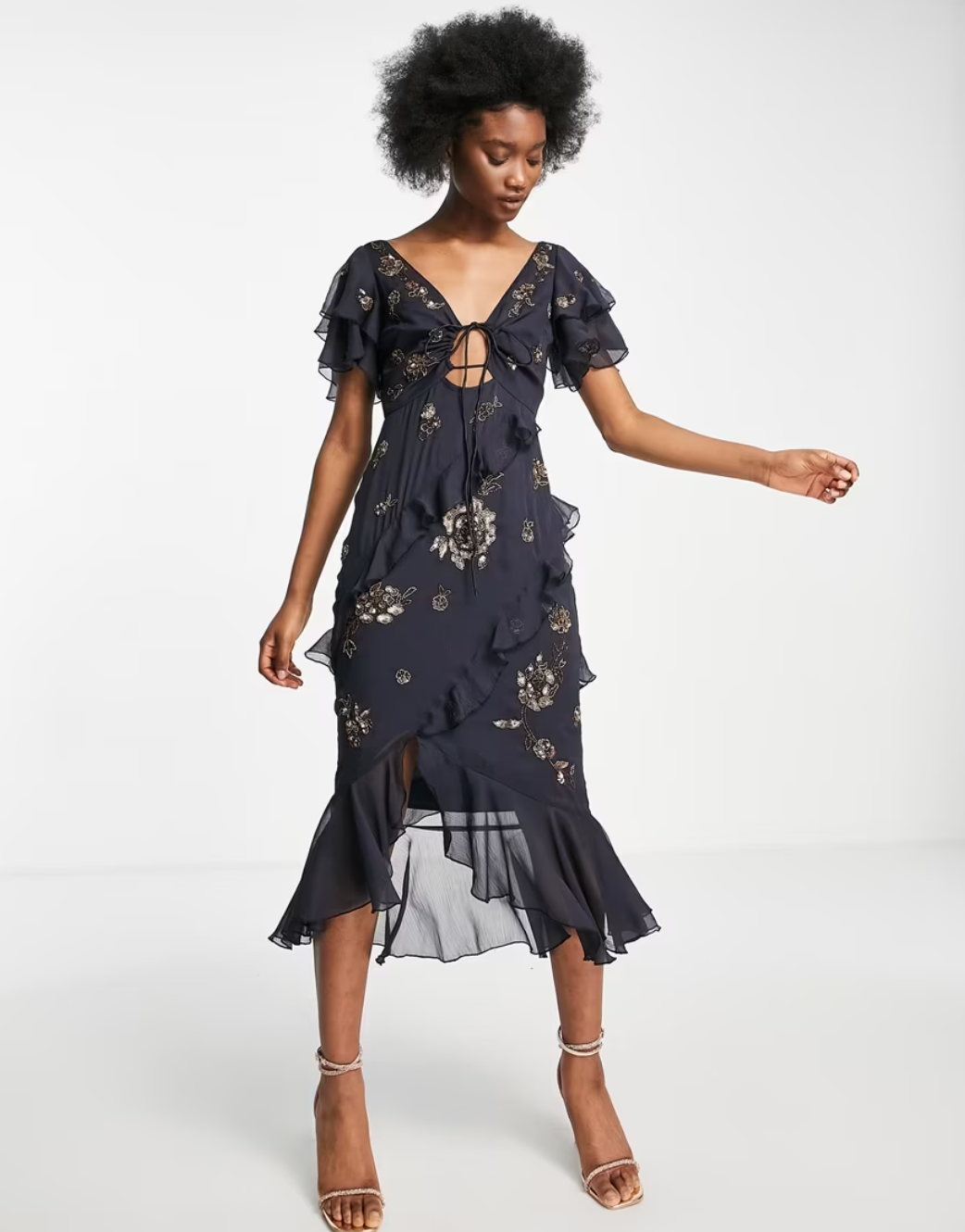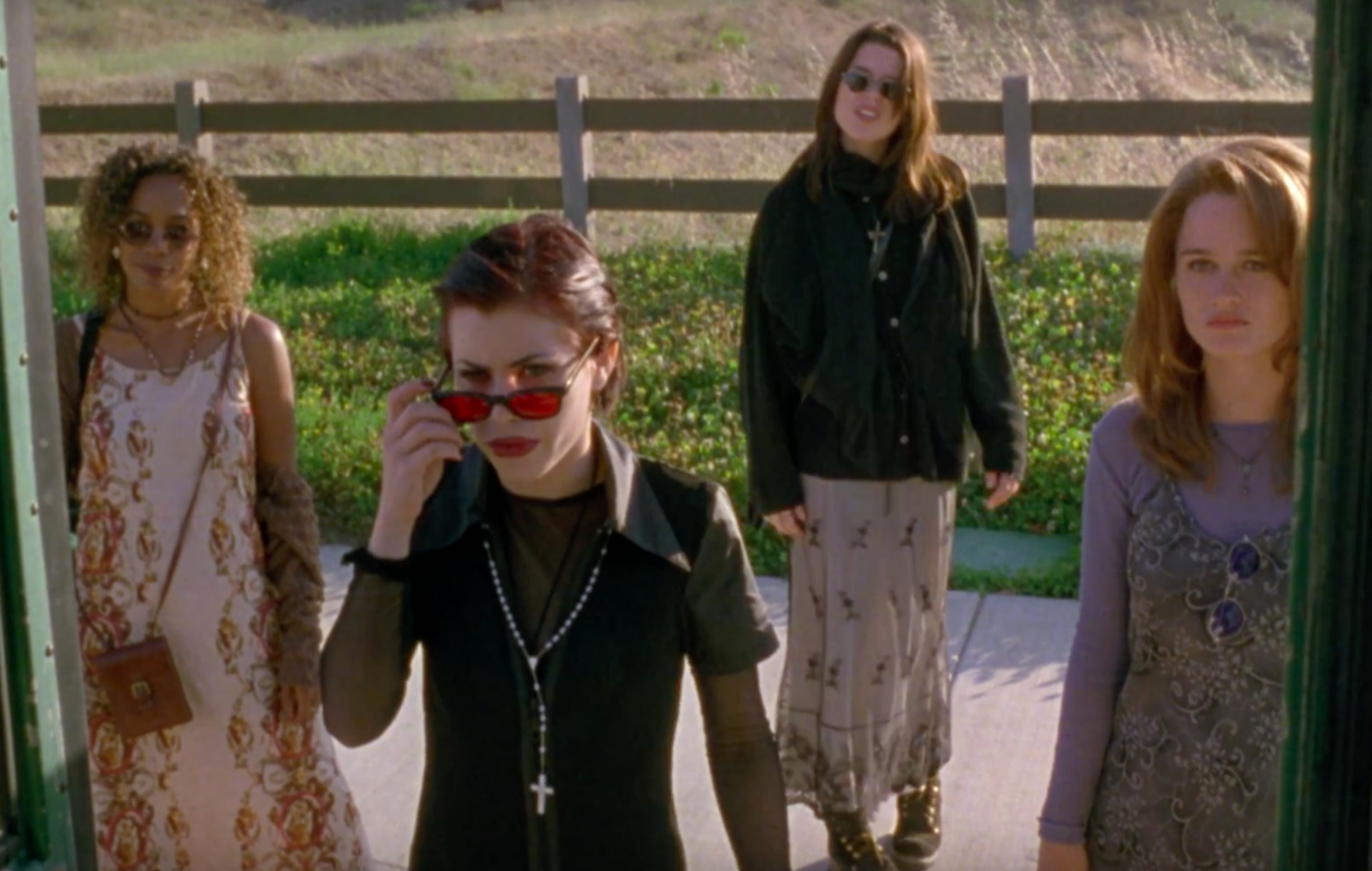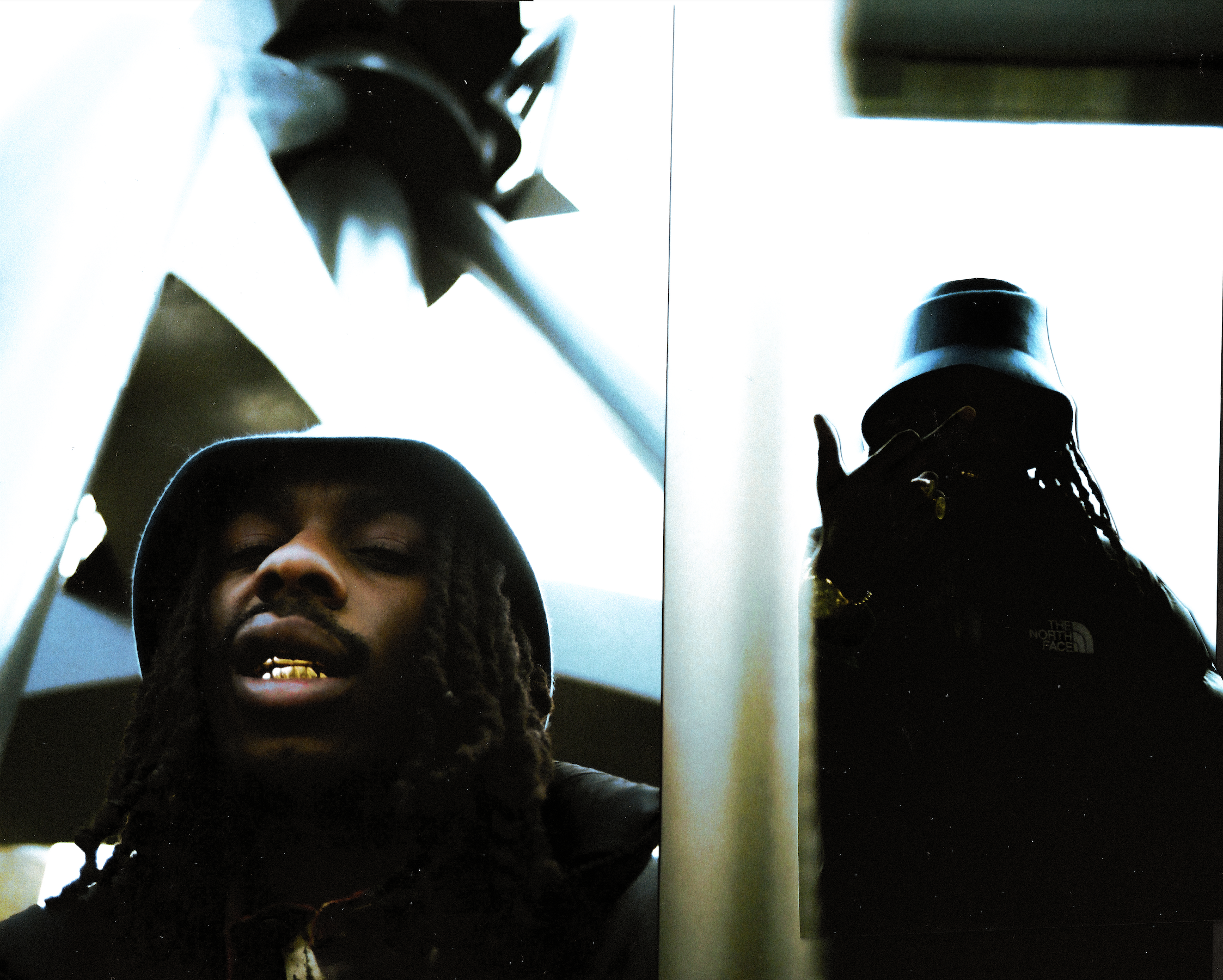Equal Parts Whimsical and Moody: The Eclectic Whimsigoth Aesthetic

Gone are the days when the term goth described someone with gravity-defying, backcombed hair and eyes smothered with smokey kohl pencil in an ankle-length leather jacket. Since its inception in the ’80s, the subcultural gothic movement has spurted out its very own subcultures in quick succession; cyberpunk, pastel goth, steampunk, and now, whimsigoth.
Whimsigoth offers a fairytale-inspired take on gothic fashion, birthing a fantastical aesthetic for those who embrace both darkness and feminine, fairy-like grace in equal measures. Think new-wave edginess topped with an otherworldly twist, less Disney fairytale and more Brother’s Grimm.
Like its parent aesthetic, the whimsigoth style has been around since the ’80s. However, it wasn’t dubbed whimsigoth until this year when the Consumer Aesthetics Research Institute (CARI), a collective association of researchers and designers, coined the term. For those invested in the look, the naming of this aesthetic fixed the major problem of knowing what you want but constantly asking ‘what do I type into google to find this?’. With its brand spanking new name, whimsigoth was off on a roll, dominating TikTok while online retailers tagged their items’ whimsical’ at lightning speed.

And that’s the aim of CARI, according to founder Evan Collins – to unearth and share trends lost to time. He told GUAP, “we’re piecing together forgotten history and essentially cataloguing unknowns. There’s so much stuff that was happening from the 70s onward that there hasn’t been much investigation into. We wanted to fill in gaps in terms of research and knowledge of design and trends in those time periods.
I’ve always had a passion for discovery that lends itself to this rigorous academic research. I love discovering things. It’s just tons of fun to find these things that seem to have been forgotten and then bring them to people’s attention again. It’s exciting to see some of what people take and run with to create their own new styles.”
The look is in direct rebellion to many of the brighter, bolder trends we’re seeing so far this decade, perfectly combining 90s grunge, childlike fascination with magic, and the classic teenage emo phase to create a dark, mystical aesthetic full of feminine and fantastical elements. Being the direct opposite to the vibrance of Y2K can somewhat explain its popularity. The oversaturation of Y2K fashion, the bright, bold colours, busy patterns, and heavily perfected silhouettes could not look more different to the deep, rich earth tones and free-floating shapes favoured by those in this whimsical subculture.
The slow turning public opinion of Y2K isn’t the only reason people are gravitating towards this new look. There’s also the not-so-fun aspect of the rampant political and societal upheaval prevalent across the world right now.

In researching the original emergence of the gothic subculture, Evan Collins and CARI have found a lot of ties to collective trauma experienced by those in the design industry, specifically them living through the AIDS crisis, and the influence that had on the development of gothic aesthetics in design. “You want to understand the context of the time period when certain trends were emerging,” he told us, “we try to delve really pretty deep into various social and cultural forces that show why these aesthetics appeared in the first place; what was going on at the time and what would have led to certain trends rising, falling, or being replaced by something else. With whimsigoth, the aesthetic shows how people dealt with such difficult times and experiences. They tried to make something out of hard times and deal with their trauma in a visual sense; candles, moody interiors, and heavy draperies – stuff that represented collective darkness.”
Similarly, it’s well documented that women and non-binary folks experience an increased interest in the ‘dark arts’ during otherwise uncontrollable times. From hexing Donald Trump during the 2016 election or stuffing a myriad of healing crystals into bras and pockets before protesting outdated laws the last time people came for witches, turning to a mystical power offers some semblance of ownership and action in times of hopelessness.
The whimsigoth aesthetic may not promote a religion or belief, but its focus is on appreciation and empowerment for the self and the nature around you, offering more of a self-affirming confidence than a promise the world will be alright. The aesthetic is reminiscent of not only witchy visuals and practices but also feminist group WITCH’s 1968 manifesto, which encourages people to be “groovy, courageous, aggressive, intelligent, nonconformist, explorative, curious, independent, sexually liberated, revolutionary” as well as, “untamed, angry, joyous and immortal.”
While whimsigoths are not necessarily witches or subscribers to WITCH, and although it is primarily a fashion aesthetic, your entire way of life is dictated, willingly, by the lifestyle of some mystical woodland creature.
Amidst its visual nods to anything ethereal, otherworldly or magic, the aesthetic promotes being at one with nature, spending time outdoors and appreciating the magic in the everyday. It adds a dimension of playfulness to life, encouraging people not to take things too seriously, to be free and influenced only by themselves and what they feel is right. While TikTok sees whimsigoths picking mushrooms, muttering affirmations, and styling lace upon lace upon lace, they’re actually promoting a slower-paced life, adding whimsy and escapism to every day – no wonder people are gravitating towards it.

The essence of the whimsigoth look is influenced by a mix of 90s influences, a sprinkling of woodland magic, and finished with a touch of Tim Burton-esque quirk. Icons of the style include Stevie Nicks, Lisa Bonet, and Helena Bonham Carter. Mundane magical influences also include everyone’s favourite 90s girl rebels Sabrina the Teenage Witch, Wednesday Addams, the witches of The Craft and Charmed, Buffy the Vampire Slayer, and Phoebe from Friends.
These influences merge together, bringing a touch of 90s goth, a handful of cottagecore, and many layers to create a whimsical, gothic fantasy enhanced by an elevated chic. The aim is a perfected mess, combining elements that shouldn’t work together and forcing them to compliment one another. Think smoky kohl eyeliner and harsh, dark brows, offset by tiered chiffon, sultry satin slips, crochet cardigans and cotton camisoles.
There’s a delicate balancing act needed to achieve the whimsigoth look. Equal measures of sultry, flirty and enchanting are contrasted with intense, deep, earthiness. The style demands a light, effortless softness in the layering of a plethora of sheer fabrics, lace, silk, tulle, chiffon, muslin or netting to create a feeling of airiness. At the same time, this lightness is grounded by an eccentric explosion of rich, moody greens, deep napoleon blues, and royal-worthy amethyst purples. These heavy, opaque layers paired with a myriad of celestial jewellery contrast the softer, ethereal layers, creating the moody earthiness channelled by the whimsigoth aesthetic.

This gothic fairytale aesthetic is as much about style, opulence and femininity as it is horror. And not just horror channelled through striking fashions, but the horror of everyday existence. Looking at the news for even a second shows why the gothic fairytales of sisterhood, environmental appreciation, and retribution against the patriarchy promoted by whimsigoth are more appealing than ever.
Who isn’t feeling an unmatched moodiness or desire to escape in the current climate? Acknowledging these emotions through aesthetic expression that offers some playfulness and fun is worth a try for all of us who are overwhelmed, burnt out and looking for a break.
CARI are still doing research and delving into the past of the whimsigoth aesthetic. Follow their research on their discord HERE.
Discover more from GUAP’s Fashion section here





![ZINO VINCI’S ‘FILTHY & DISGUSTING’EP BRINGS YOU TO THE CORE OF THE ARTIST [@ZinoVinci]](https://guap.co/wp-content/uploads/2023/10/Zino-4.jpg)



